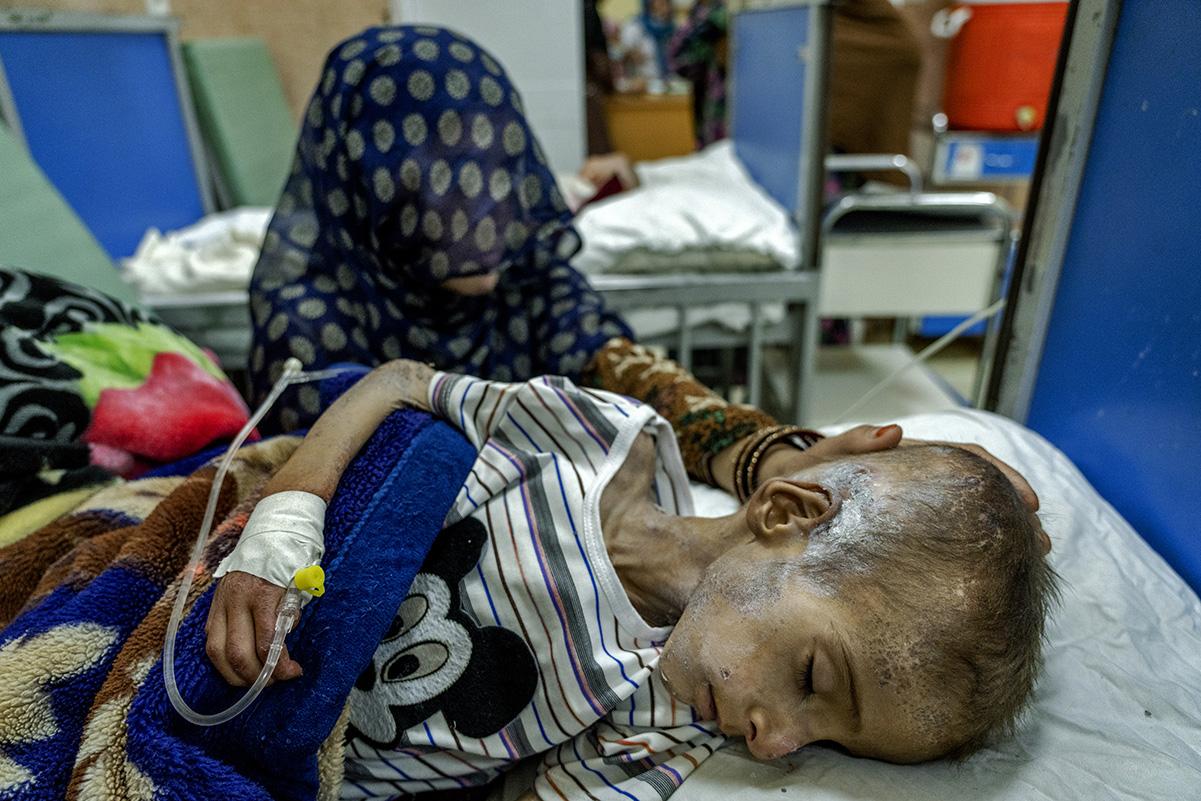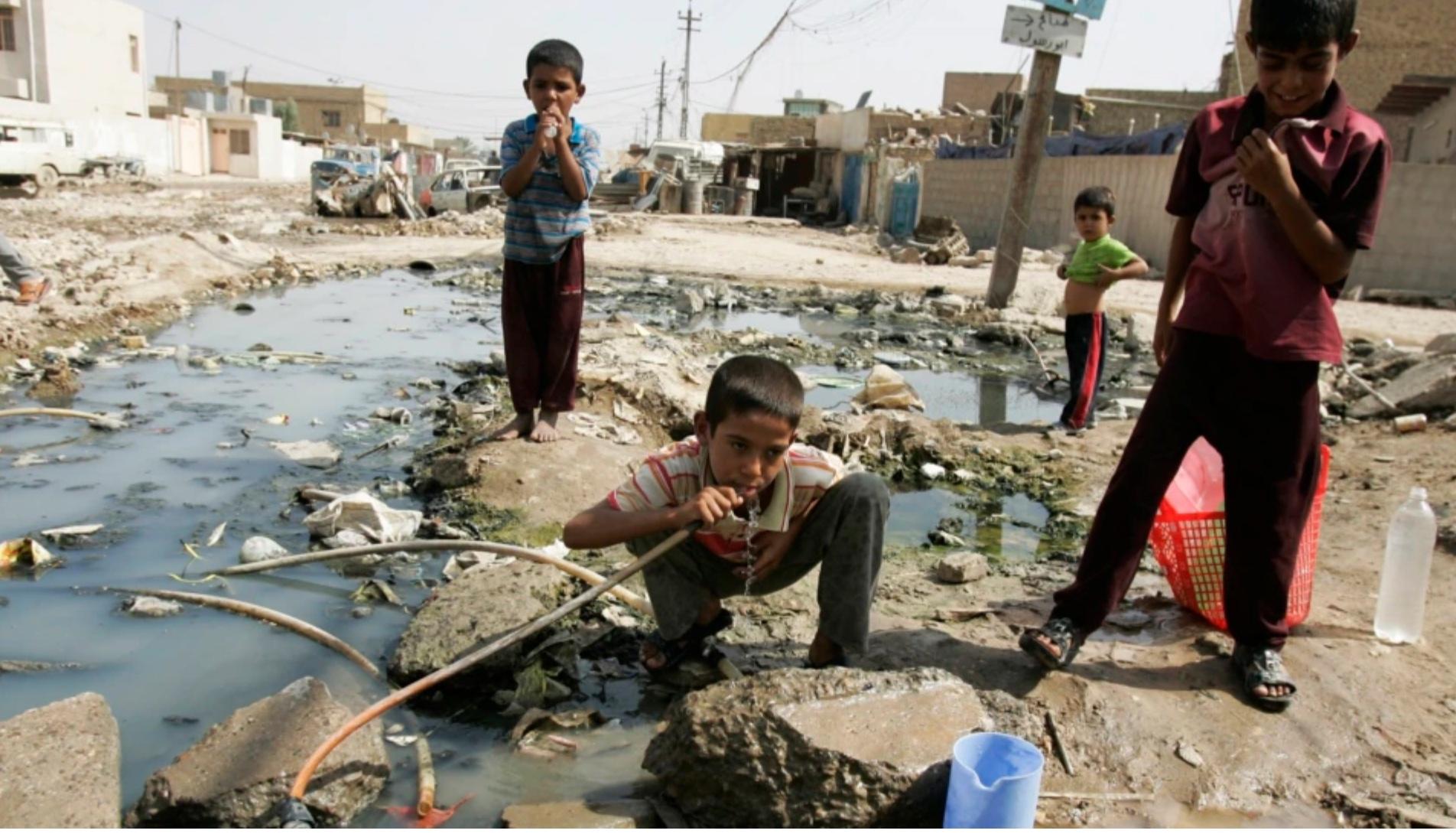Bob Avakian has made this extremely important point:
Without confronting the very real horror of what this country has been, and what it has done, here and all over the world, from its founding to the present—and without coming to deeply hate this, it is not possible, in the final analysis, to retain one’s own humanity and act in the highest interests of all humanity. (From “The Problem, the Solution, and the Challenges Before Us”)

A new study from Brown University’s Watson Institute for International and Public Affairs (How Death Outlives War: The Reverberating Impact of the Post-9/11 Wars on Human Health, Stephanie Savell, May 15, 2023) has opened a window on a whole other level of American crime which has been largely hidden until now.
Background: 9/11 and the “Post-9/11 Wars”
On September 11, 2001, the reactionary Islamic fundamentalist group al-Qaeda carried out terrorist attacks targeting the World Trade Center in New York City and the Pentagon in Washington, DC. Nearly 3,000 people were killed, and it is estimated that roughly 3,000 more have died of diseases in the decades since—diseases that resulted from breathing the toxic air produced by the collapse of the Twin Towers.
This terrible loss of innocent lives was a crime against humanity. But the rulers of the U.S. do not represent—or give a damn about—the interests of humanity. They are representatives of the most powerful imperialist empire in human history, dominating and exploiting billions of the world’s people. So while one response to the 9/11 attacks was to agonize over the deaths and over why the world is so wracked with violence and hatred and how do we get to a different and better world, that is not how those who rule this country looked at it.
First, they saw this as big-time global gangsters that needed to show the world that they were not weak, and that anyone who attacked them (as well as anyone who lived in the same countries as the handful that attacked them) would be made to pay.
And second, they saw this as an opportunity to “drain the swamp”—to take on and take out a range of other reactionary forces in the Middle East and surrounding regions that were challenging U.S. domination of this strategically and economically crucial part of “their” empire. These forces ranged from al-Qaeda, ISIS and other Islamic jihadist groups to “rogue” leaders like Iraq’s Saddam Hussein (who the U.S. had long backed but who was no longer fully dancing to the tune the U.S. was playing) and to Russia, an imperialist rival that was closely tied to the Assad government in Syria.
So the U.S. response was to engage in a series of wars that would turn large parts of Afghanistan, Iraq, Libya, Somalia, Syria, Pakistan and Yemen1 into hellish war zones in which the most advanced killing technology has been unleashed on remote rural villages and densely populated cities alike. Over 900,000 people have been killed as a direct result of these wars—that is, shot, blown up, tortured to death, burned alive or in other ways violently killed.2 That is 150 deaths for every person who died on September 11 or as a result of exposure to those toxic substances produced that day.
It is important to note that there is blood on the hands of all the contending reactionary forces in these wars, and that there are other factors at work in the Middle East and surrounding area—such as the impacts of global warming—that contributed to the instability, war, and suffering there. But the U.S. was and is by far the most powerful and destructive actor in the region, and, it was U.S. determination to maintain control of this region that was the main and driving force in the decades of horrific violence that would soon engulf it.
A “spiraling pattern of war-induced poverty, food insecurity, communicable diseases, and death…”
As terrible as the “direct” death toll is, the new Watson Institute report brings to light that the actual toll of death and misery from these wars is vastly greater than those killed by bombs and bullets. It describes a “spiraling pattern of war-induced poverty, food insecurity, communicable diseases, and death [that] is repeated across the war zones.”
Here we can only sketch evidence and conclusions of the Watson Center report, but we encourage people to read this carefully researched and reasoned report to get the full picture.
- The destruction of civilian infrastructure—electrical grids, water purification plants, hospitals—leads to the spread of epidemic diseases like cholera and diphtheria and the collapse of healthcare systems to treat them and vaccination programs to prevent them.3 Doctors flee the country, making healthcare even more inaccessible. In the five years after the 2003 U.S. invasion of Iraq, 18,000 doctors—half the country’s total—fled.
- The bombing of cities causes massive job losses and intensifies poverty. The bombing of rural areas devastates farmlands with craters and toxic chemicals. The bombing of ports and electrical stations, along with the deaths of civilian breadwinners, gives rise to economic collapse, poverty and starvation that kill hundreds of thousands, mainly children. In Somalia alone, the report says, “At least 258,000 people, including 133,000 children under five, died between October 2010 and April 2012.” Starvation also stalks millions in Yemen and Afghanistan.
- The use of depleted uranium, white phosphorus, dioxin and other toxic chemicals by the U.S.—and their “disposal” in open-air burn pits—poisons the air and water and leads to increases in cancer, birth defects, and infant and maternal mortality. Citing a UN estimate, the Watson Center report says that “2,000 tons of depleted uranium may have been used in [Iraq]. Sandstorms occur often, blowing radioactive particles from military dump sites into residential neighborhoods.”
- The extreme stress of being “under fire” for years or decades, seeing loved ones blown to pieces, living on the edge of starvation, also translates into increased mental illness, drug addiction, and interpersonal violence, especially against women. “In Iraq, rape and sexual violence increased sharply after 2003; one in five Iraqi women has suffered physical or psychological abuse since then.”
And on and on.
The report shows that these “indirect deaths grow in scale over time,” long after the shooting stops. For example, it describes the extremely dire situation in Afghanistan, where 95% of the population “are not getting enough to eat,” and “one million children are at risk of death.” And it notes: “Though in 2021 the United States withdrew military forces from Afghanistan, officially ending a war that began with its invasion 20 years prior, today Afghans are suffering and dying from war-related causes at higher rates than ever. … [T]he pressing question is whether any death can today be considered unrelated to war.”
Based on the available evidence, the report concludes that “a reasonable, conservative average estimate for any contemporary conflict is a ratio of four indirect deaths for every one direct death.” This translates into a conservative estimate of 4.5 million direct and indirect deaths tied to the wars in Afghanistan, Pakistan, Iraq, Syria and Yemen.
To again compare this with the 9/11 deaths that are supposed to “justify” this nightmare, that is 750 deaths in the post -9/11 wars for every person who died as a direct or indirect result of the 9/11 attacks.
In addition, the report documents a terrifying level of malnutrition and outright starvation among children under five years old: “[M]ore than 7.6 million children under five are suffering from acute malnutrition, or wasting, in Afghanistan, Iraq, Syria, Yemen, and Somalia. ‘Wasting’ means … literally wasting to skin and bones.” This level of malnutrition increases vulnerability to diseases and also stunts growth, so even if kids survive, they may never reach their full potential physical growth or cognitive ability.
Returning to the sharp point made by Bob Avakian: How can anyone refuse to confront this reality and still retain their humanity? And how can humanity burst beyond this nightmarish society unless we learn to hate—and to act to eliminate—all of this unnecessary suffering?
* * * * *
In the picture captions below, the text in quotes is from Brown University’s Watson Institute for International and Public Affairs report How Death Outlives War: The Reverberating Impact of the Post-9/11 Wars on Human Health.


A severely malnourished seven-year-old Amal Hussein — whose name means "hope" in Arabic, is weighed at the Aslam Health Center in Hajjah, Yemen, August 25, 2018. Photo: AP
Yemen: Blockades and Bombings Yield Economic Collapse, Epidemics and Starvation
The war in Yemen is between U.S.-backed forces of Saudi Arabia and United Arab Emirates and Houthi rebels loosely allied with the reactionary theocratic Iranian government. The Saudi-led forces have blockaded Houthi-controlled areas and bombed its main port, leading to food shortages, fuel shortages and economic collapse. “More than 17.4 million Yemenis are food insecure and 7.3 million facing emergency levels of hunger. Since the beginning of the war, an estimated 85,000 children under five may have died due to starvation.” Fuel shortages have caused a breakdown of water purification and pumping, which in turn has subjected population to outbreaks of water-borne diseases, “including the largest cholera epidemic of modern times (2016-2018)” that infected at least 7 million people and killed 2,000. As of 2021, Yemen suffered at least 377,000 war-related deaths.
Afghanistan: Starvation and Economic Collapse
“In Afghanistan, 20 years of U.S.-led war (2001-2021) on top of the preceding 20 years of Soviet-led4 and civil wars, combined with the current misrule of the Taliban, U.S. and global sanctions, drought, and the effects of the COVID-19 pandemic and the war in Ukraine, have displaced millions and left tens of millions without basic life necessities. Malnutrition was prevalent throughout the U.S. occupation but it skyrocketed after the U.S. withdrawal in August 2021. Afghanistan’s economy has collapsed and over half the population now lives in extreme poverty, on less than $1.90 per day. The situation is dire: 95% of Afghans are not getting enough to eat, and in women-headed households that number is 100%. An estimated 18.9 million people—nearly half the country’s population—were acutely food insecure in 2022. Of these, 3.9 million children are acutely malnourished or ‘wasting,’ insufficiently intaking essential nutrients, with serious physiological consequences. One million Afghan children are at risk of death.”
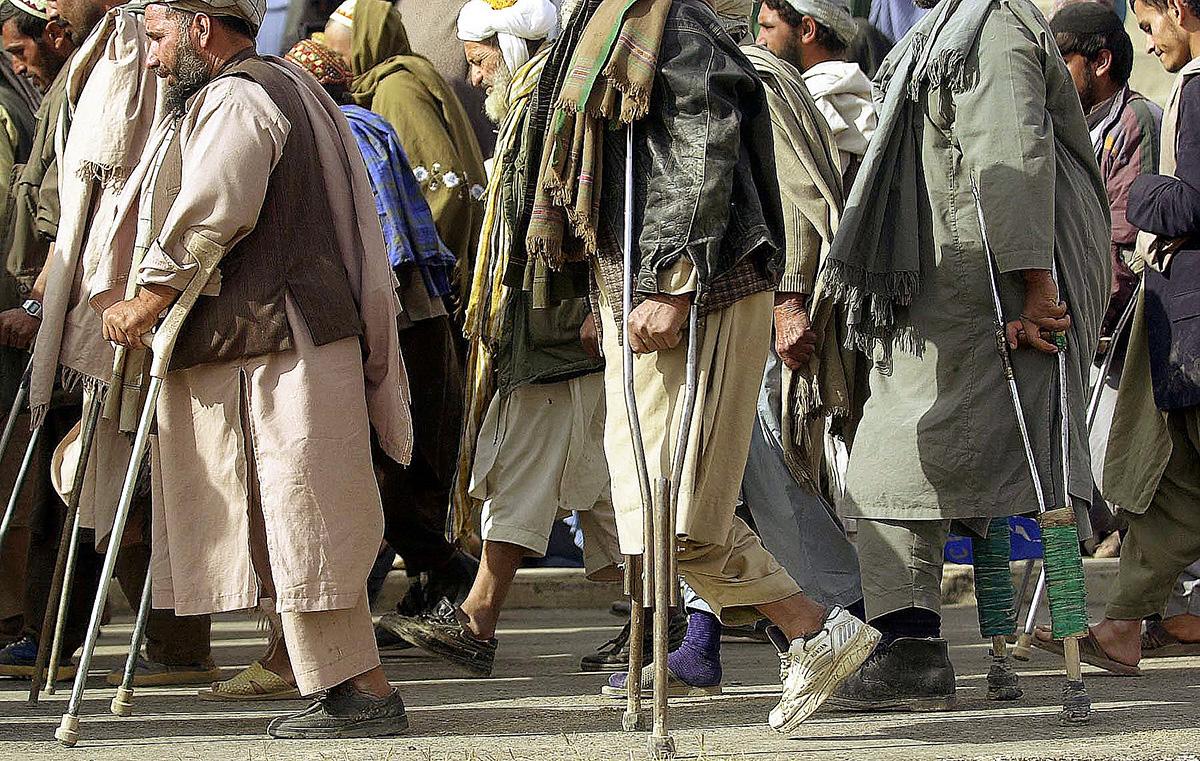

A group of amputees, many the victims of land mines, march in Kandahar, December 18, 2002. Photo: AP
Afghanistan: Unexploded Ordnance
“About three to five percent of U.S. bombs, shells, and rockets fail to explode on initial contact, according to U.S. military officials … In Afghanistan in 2021 … the UN estimated that 160 people per month were being killed by explosive remnants of war—almost 2,000 in a single year, more than 79% of whom were children. Of an estimated 33 million population in 2015, around 1.5 million Afghans had a physical disability; many of them are survivors of such explosions.”
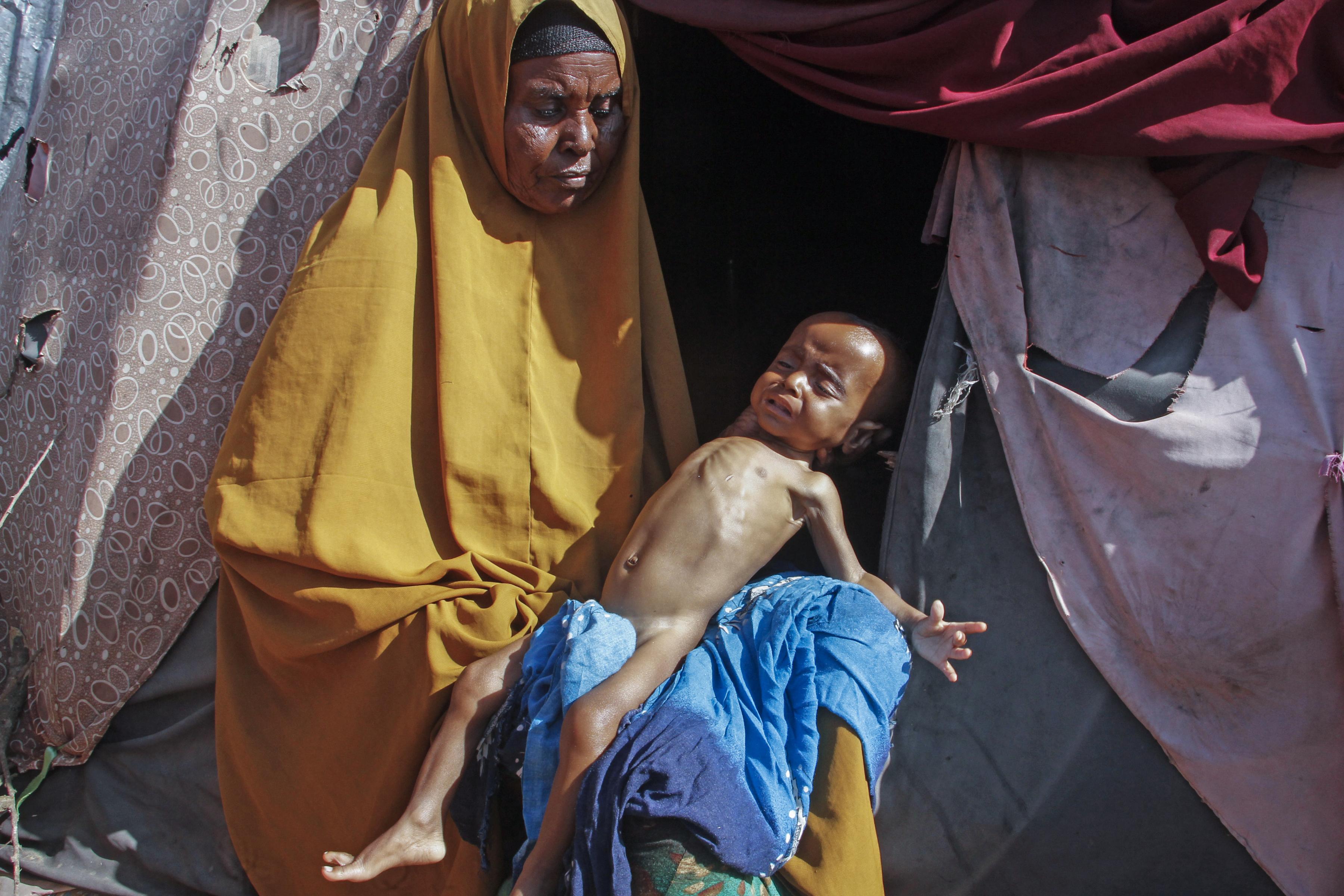

Boolo Aadan, 63, who fled drought-stricken areas, holds 9-month-old grandchild outside the tent where they now live at a makeshift camp on the outskirts of the capital Mogadishu, Somalia, February 4, 2022. Thousands of desperate families have fled a severe drought seeking food and water in camps for displaced people outside the capital. Photo: AP/Farah Abdi Warsameh
Somalia: Famine, Sanctions
“U.S. airstrikes … have damaged farms and livestock (there have been 237 U.S. strikes in Somalia since 2003). … The severe impact of such economic setbacks on populations who depend on the land for their survival cannot be underestimated.” In the face of this, the U.S. restricted and even halted humanitarian relief, claiming that aid (i.e., food) might fall into the hands of the Al-Shabaab jihadists. “[I]n 2009, the U.S. suspended over $50 million in humanitarian aid for Somalia, including all deliveries via the World Food Program (WFP). ... In 2010, the WFP pulled out of southern Somalia, which was largely controlled by Al-Shabaab, and subsequently, Al-Shabaab announced that it was banning WFP. … The following year, amidst a major drought in July 2011, the UN declared a famine in this region affecting over three million. … At least 258,000 people, including 133,000 children under five, died between October 2010 and April 2012. Currently, Somalia is facing the possibility of another famine.”
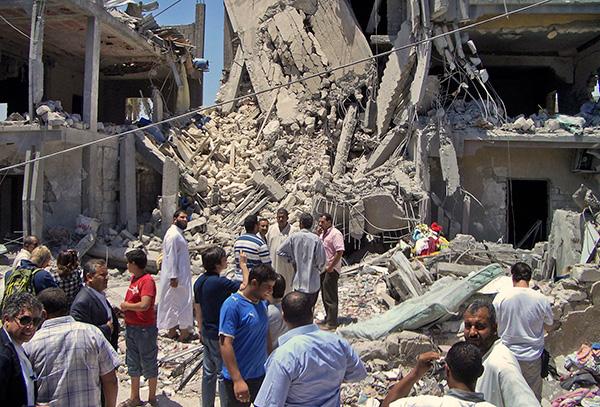

Tripoli, Libya; residential building damaged during seven months of U.S./NATO bombing of Libya in 2011. Photo: AP
Libya: Drastic Decline in Life Expectancy, Destruction of Healthcare Facilities
In 2011, the U.S. and NATO intervened in the Libyan civil war, supposedly to “save” the Libyan people. Before that, “the country’s human development index was ranked the highest in Africa.”5 But “the war disrupted healthcare and closed hospitals across the country. The war years brought about a large decrease in life expectancy (nine years for men and six for women), and infectious diseases such as tuberculosis surged. In the Libyan city of Sirte, a U.S. air campaign conducted around 500 strikes in just five months in 2016. ... A 2018 UN Habitat report noted the destruction of the Sirte central hospital and many primary healthcare facilities.”
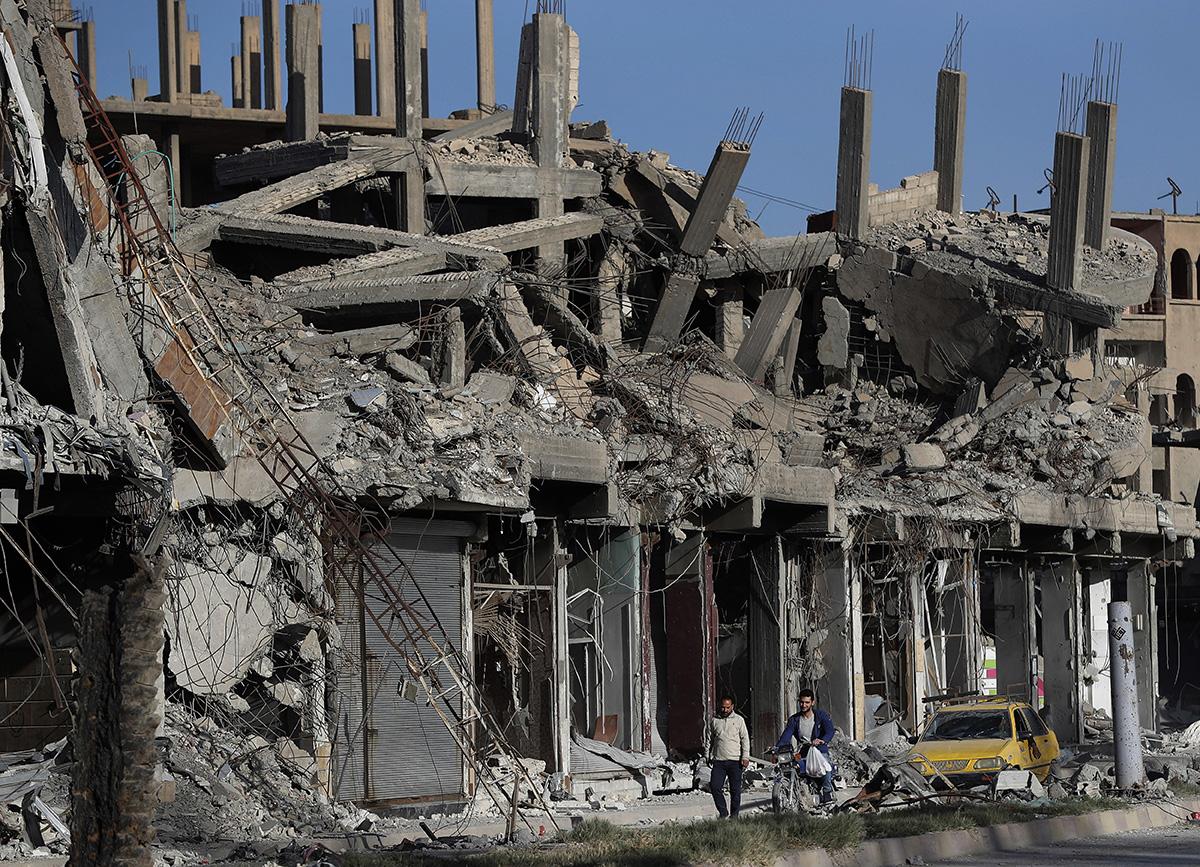

Destroyed buildings line a street damaged during. bombardment by U.S.-led coalition that killed more than 1,600 civilians in the northern Syria city of Raqqa during months of bombardment in 2018. Photo: AP
Syria: Destruction of Raqqa, Including Hospitals
“In 2017, a U.S. air campaign to oust the Islamic State from its stronghold in Raqqa resulted in thousands of deaths. U.S. coalition forces launched air strikes on buildings full of civilians using wide area effect munitions, which could be expected to destroy the buildings, including at least two dozen health facilities.”
Iraq: Destruction of Water and Sanitation Systems, Cities and Villages
“After the 2003 U.S. invasion of Iraq, water and sanitation systems were destroyed, and millions of tons of raw sewage were dumped into the rivers. … Between 2014 and 2017, various combatants in Iraq destroyed 63 cities and 1,556 villages; the destruction of residential buildings alone generated over 55 million tons of debris.”
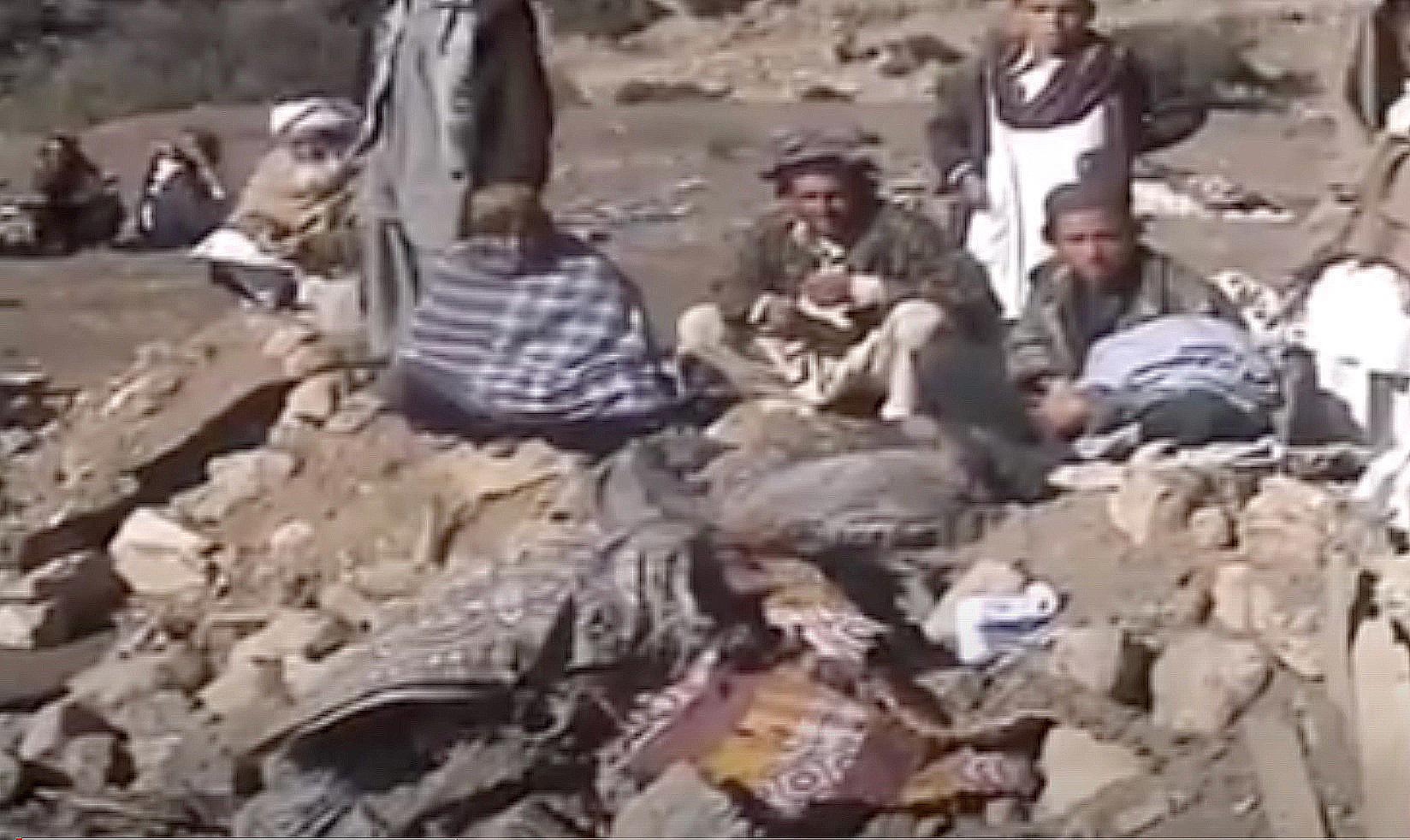

Pakistan: U.S. drone strikes on Pashtun tribal areas. YouTube screengrab.
Pakistan: Double-Tap Drone Strikes and Impact on Mental Health
“In Pakistan between 2004 to 2010, the U.S. conducted ‘double-tap’ drone strikes, most of them on Pashtun villages in North and South Waziristan, along the Afghan border, in which a second strike follows an initial strike against survivors who go to the site to rescue the injured or dead. Reports document that residents of these regions suffered from PTSD, chronic anxiety, and constant fear. A local resident explained, ‘God knows whether they’ll strike us again or not. But they’re always surveying us, they’re always over us, and you never know when they’re going to strike and attack.’”


Women, children, and an injured man who left the besieged Islamic State-held village of Baghouz, Syria, scramble over a rocky hillside to be checked by U.S-backed Syrian Democratic Forces, Thursday, March 14, 2019. Photo: AP
Refugee Crisis and Internally Displaced People (IDP)
“Since 2001 an estimated 38 million people have been displaced by the post-9/11 wars. … The majority of forcibly displaced people are children; globally, the proportion of displaced people who were children reached 53% in 2017. Displaced women are frequent victims of rape and other sexual violence and have reduced access to reproductive healthcare, leading to higher rates of maternal and newborn mortality. … In Afghanistan there were approximately four million internally displaced people in March 2022, almost 60% of whom were children under age 18. These IDPs experience malnutrition and mental health challenges and lack access to healthcare, with particularly serious consequences for maternal and infant mortality.
“After the Saudi-led coalition entered the Yemen conflict in 2015, the heavier fighting led to the highest number of displacements in the world that year, 2.2 million people. Since then, coalition airstrikes have continued to displace millions; there were 3.6 million Yemeni IDPs as of 2019.”
FOOTNOTES:
1. NATO and/or other U.S. allies were also involved in the wars in Afghanistan, Iraq and Libya; the war in Yemen is being carried out by Saudi Arabia and the United Arab Emirates (UAE) with U.S. weapons, intelligence support, and political backing. The U.S. has unleashed tremendous violence in Pakistan, overwhelmingly through unmanned drone attacks as well as CIA operations—the U.S. military is not formally “on the ground” there. [back]
2. The Watson Institute gives a conservative estimate of at least 906,000 violent deaths in the post-9/11 wars. [back]
3. It’s very important to note that much of the destruction of civilian infrastructure by the U.S. and its allies is intentional. See for instance “United States of Atrocity, Part 3,” (at revcom.us) section on Operation Desert Storm, which quotes U.S. officials bragging about the fact that “not an electron was flowing” in Iraq after seven days of U.S. bombing. [back]
4. “Soviet-led” refers to the former Soviet Union, which collapsed in 1991. After socialism was defeated in the Soviet Union in the mid-1950s, the Soviet Union became a capitalist-imperialist power masquerading as “socialism.” Russia, which was the largest part of the Soviet Union, emerged from the collapse as a significant imperialist power contending with the U.S. empire.[back]
5. Human Development Index is a measure of education, life expectancy, national income, and other factors that impact the ability of a population to live and flourish.[back]
